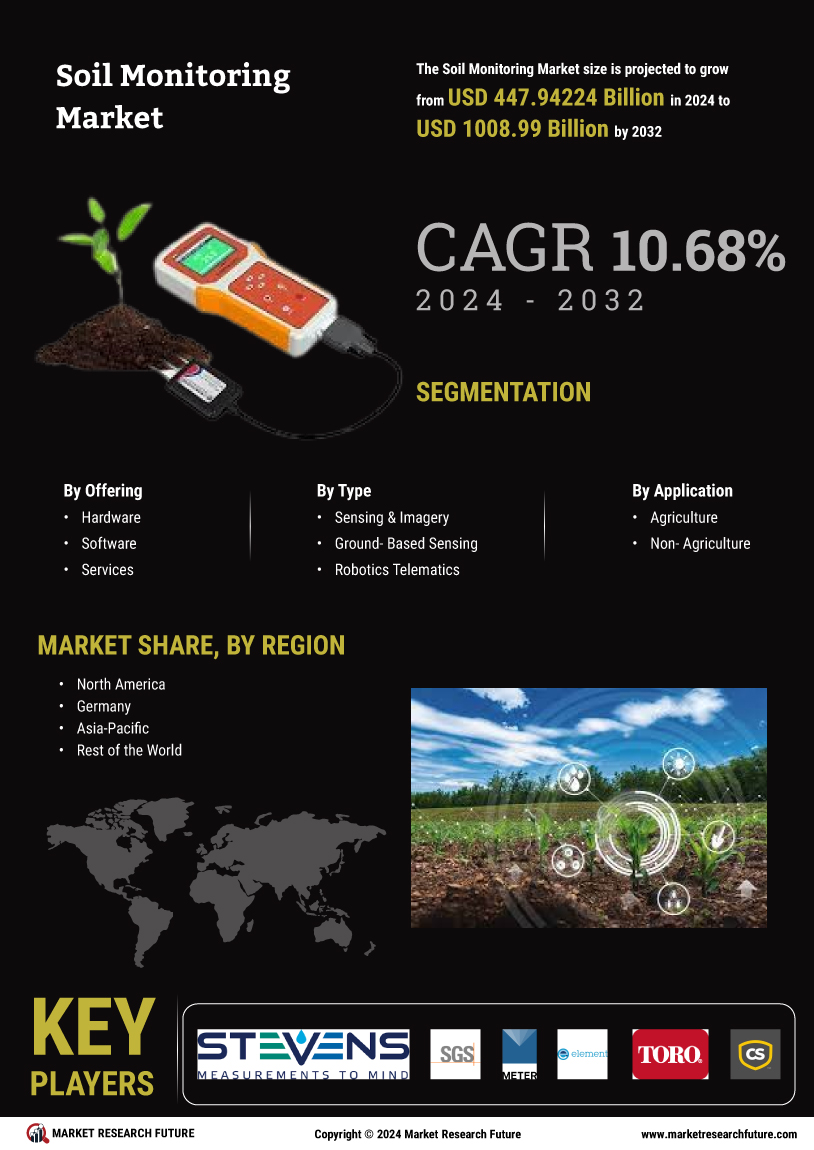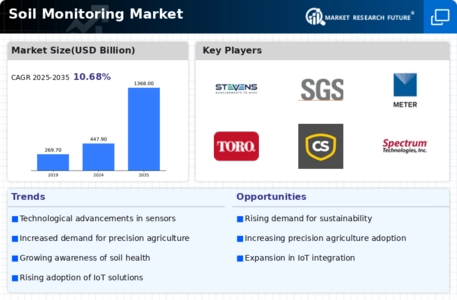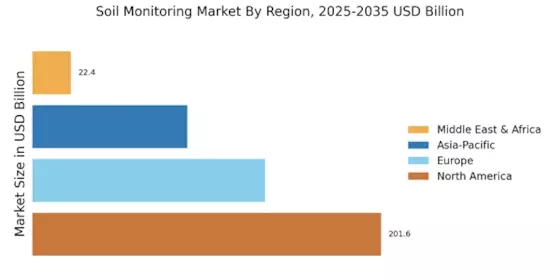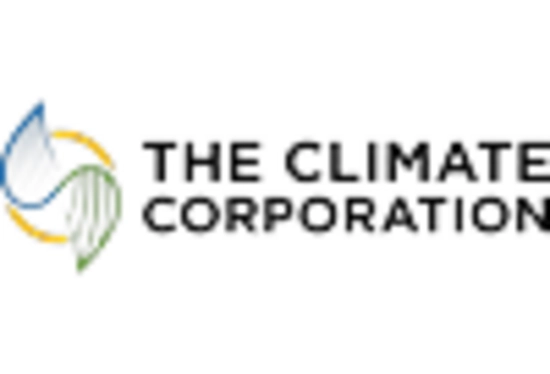Environmental Regulations
The Soil Monitoring Market is also shaped by increasing environmental regulations aimed at promoting sustainable land use and agricultural practices. Governments and regulatory bodies are implementing stricter guidelines to mitigate soil degradation and pollution, which necessitates the use of effective soil monitoring systems. For instance, regulations concerning nutrient management and pesticide application are becoming more prevalent, compelling farmers to adopt technologies that ensure compliance. The market for soil monitoring solutions is expected to expand as agricultural producers seek to meet these regulatory requirements. This trend indicates a growing recognition of the role that soil monitoring plays in environmental stewardship, thereby driving demand within the Soil Monitoring Market.
Technological Advancements
The Soil Monitoring Market is experiencing a surge in technological advancements, particularly in sensor technology and data analytics. Innovations such as IoT-enabled sensors allow for real-time monitoring of soil conditions, which enhances precision agriculture practices. According to recent data, the adoption of smart agriculture technologies is projected to grow at a compound annual growth rate of over 10% in the coming years. This trend indicates a strong demand for sophisticated soil monitoring solutions that can provide actionable insights to farmers and agronomists. As technology continues to evolve, the Soil Monitoring Market is likely to see increased investment in research and development, further driving growth and enhancing the capabilities of soil monitoring systems.
Rising Demand for Food Security
The Soil Monitoring Market is significantly influenced by the rising demand for food security. As the global population continues to grow, the pressure on agricultural systems to produce more food sustainably intensifies. Soil health is critical to achieving this goal, as it directly impacts crop yields and quality. Recent statistics suggest that soil degradation affects approximately 33% of the world's arable land, highlighting the urgent need for effective soil monitoring solutions. By utilizing advanced soil monitoring technologies, farmers can optimize their practices, ensuring that soil remains fertile and productive. This growing awareness of the importance of soil health is likely to propel the Soil Monitoring Market forward, as stakeholders seek to implement sustainable agricultural practices.
Growing Awareness of Soil Health
The Soil Monitoring Market is witnessing a growing awareness of soil health among farmers, agronomists, and policymakers. This heightened consciousness is largely driven by educational initiatives and research highlighting the critical role of soil in agricultural productivity and environmental health. As stakeholders become more informed about the implications of soil degradation, there is an increasing demand for effective soil monitoring solutions. Recent surveys indicate that a significant percentage of farmers are now prioritizing soil health management practices, which is likely to stimulate growth in the Soil Monitoring Market. This trend suggests that as awareness continues to rise, the adoption of soil monitoring technologies will become more widespread, further enhancing the industry's prospects.
Increased Investment in Agriculture
The Soil Monitoring Market is benefiting from increased investment in agriculture, particularly in developing regions. Governments and private investors are recognizing the importance of modernizing agricultural practices to enhance productivity and sustainability. This influx of capital is often directed towards the adoption of advanced technologies, including soil monitoring systems. Recent reports indicate that investment in agricultural technology is expected to reach billions of dollars in the next few years, which will likely bolster the Soil Monitoring Market. As more farmers gain access to these technologies, the overall efficiency and sustainability of agricultural practices are expected to improve, further driving market growth.


















Leave a Comment